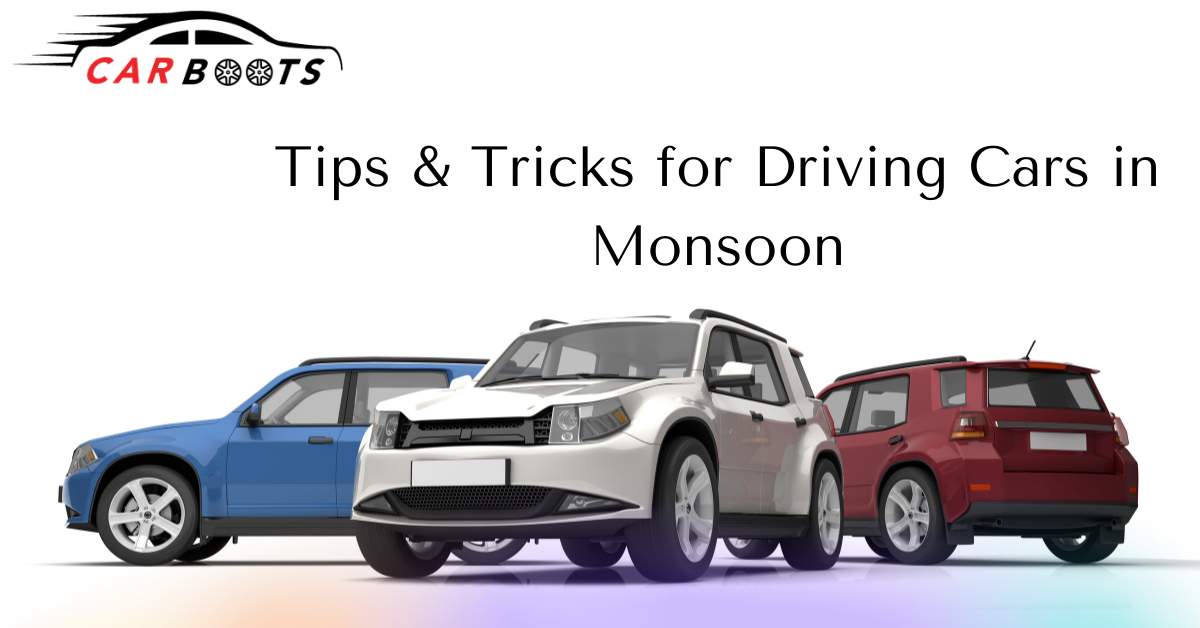Tips & Tricks for Driving Cars in Monsoon
Tips & Tricks for Driving Cars in Monsoon
Monsoon season can be a nightmare for drivers, especially those who are not familiar with the challenges of driving in the rain. The roads can become slippery, visibility can be poor, and the risk of accidents can increase. However, with the right precautions and knowledge, you can ensure a safe and hassle-free driving experience in the monsoon season. In this article, we will provide you with some tips and tricks for driving cars in the monsoon.
1. Get Your Car Monsoon Ready
Before you start driving in the monsoon, it is essential to ensure that your car is in good condition. Check the battery, tires, brakes, wipers, and headlights of your car to ensure that they are working correctly. It is also recommended to get your car serviced before the monsoon season to avoid any mechanical issues during the rainy season.
2. Slow Down and Maintain Safe Distance
During the monsoon, the roads can be slippery, and it can take longer to stop your car. Therefore, it is essential to slow down and maintain a safe distance from the vehicle in front of you. It is also recommended to avoid sudden braking, which can lead to skidding and loss of control.
3. Use Headlights and Hazard Lights
Visibility can be poor during the monsoon season, especially during heavy rain. Therefore, it is recommended to use your headlights and hazard lights to improve visibility and alert other drivers. Make sure that your headlights are working correctly and adjust them to the right angle to avoid blinding other drivers.
4. Avoid Waterlogged Roads
Waterlogged roads can be dangerous, and it is recommended to avoid them if possible. If you must drive through a waterlogged road, make sure that the water level is not too high. It is also recommended to drive in the middle of the road to avoid water entering the engine through the exhaust pipe.
5. Be Prepared for Emergencies
It is always better to be prepared for emergencies, especially during the monsoon season. Carry an emergency kit in your car, including a first-aid kit, flashlight, extra batteries, and a mobile phone charger. It is also recommended to keep a spare tire, a jack, and a toolkit in your car.
6. Use the Defogger
Fogging can be a common problem during the monsoon season, especially during early mornings and late evenings. It is recommended to use the defogger of your car to improve visibility and avoid accidents. Make sure that the defogger is working correctly before you start driving.
7. Avoid Overtaking
Overtaking can be dangerous during the monsoon season, especially on highways and busy roads. It is recommended to avoid overtaking unless it is necessary. If you must overtake, make sure that the visibility is clear, and there is enough space to overtake safely.
8. Keep Your Distance from Two-Wheelers
Two-wheelers can be vulnerable during the monsoon season, and it is essential to keep a safe distance from them. They can easily lose control on slippery roads, and accidents can be fatal. It is recommended to keep a safe distance from two-wheelers and avoid overtaking them.
9. Stay Calm and Alert
Driving in the monsoon season can be stressful, and it is essential to stay calm and alert. Avoid distractions such as using your phone or listening to loud music while driving. Focus on the road and be aware of your surroundings. If you feel tired or stressed, take a break and rest.
10. Be Patient and Plan Your Route
During the monsoon season, the traffic can be heavy, and the roads can be congested. It is essential to be patient and plan your route in advance. Avoid rush hours and busy roads if possible. Use a GPS device or a map to find the shortest and safest route to your destination.
Conclusion
Driving in the monsoon season can be challenging, but with the right precautions and knowledge, you can ensure a safe and hassle-free driving experience. Get your car monsoon ready, slow down, use headlights and hazard lights, avoid waterlogged roads, be prepared for emergencies, use the defogger, avoid overtaking, keep your distance from two-wheelers, stay calm and alert, and be patient and plan your route. Remember to always prioritize safety over speed and reach your destination safely.
FAQs
What should I do if my car gets stuck in a waterlogged road during the monsoon?
- If your car gets stuck in a waterlogged road, do not try to start the engine. Call for help and wait for a tow truck to arrive.
Can I drive my car during heavy rain?
- You can drive your car during heavy rain, but it is recommended to slow down and maintain a safe distance from other vehicles.
How often should I get my car serviced during the monsoon season?
- It is recommended to get your car serviced before the monsoon season and check it regularly for any mechanical issues during the rainy season.
Can I use my hazard lights while driving in the rain?
- Yes, you can use your hazard lights while driving in the rain to improve visibility and alert other drivers.
Is it safe to drive at night during the monsoon season?
- Driving at night can be challenging during the monsoon season due to poor visibility. It is recommended to avoid driving at night unless it is necessary.








